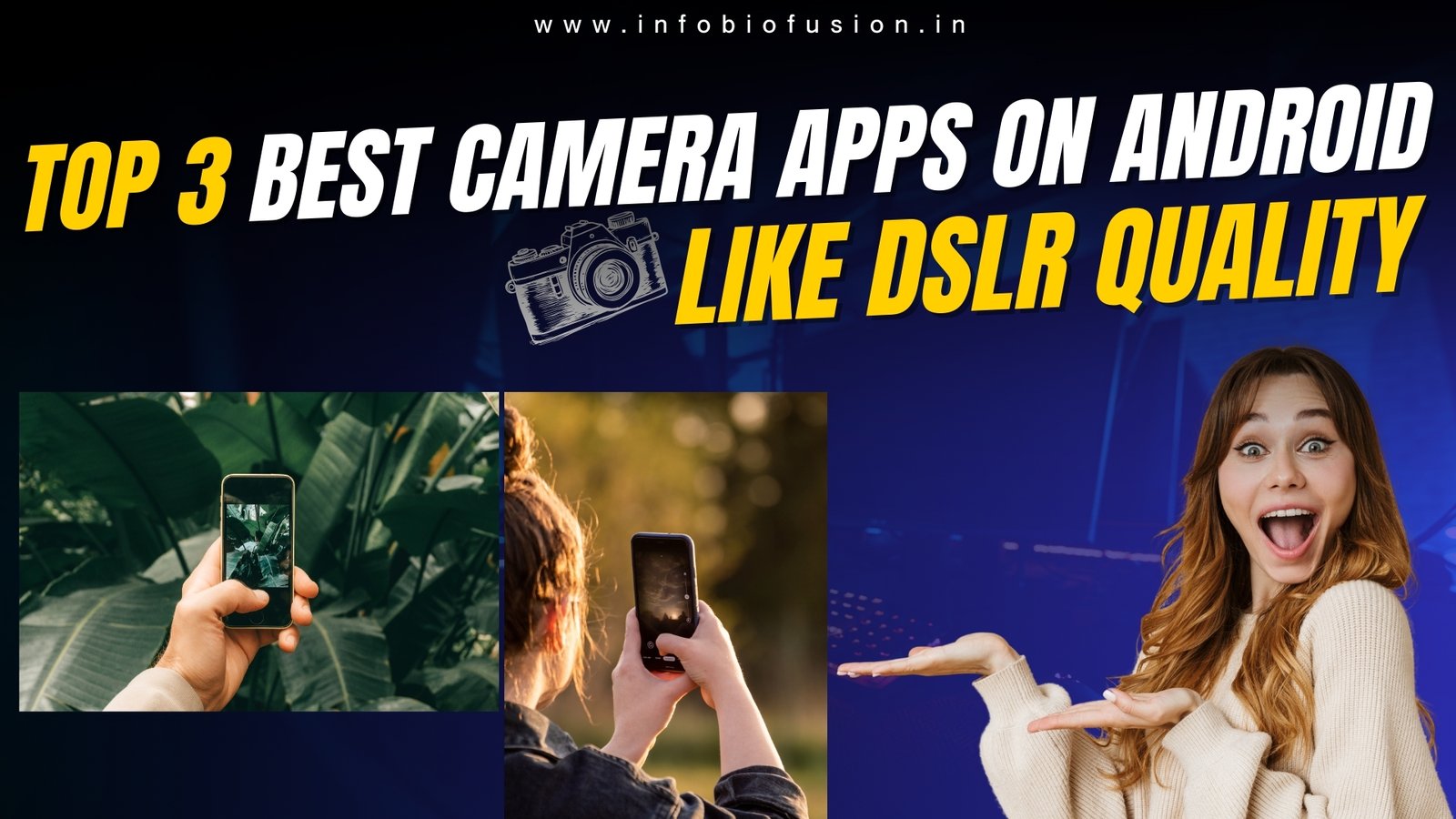If you love clicking photos and recording videos on your Android phone, then choosing the right camera app is very important. The inbuilt camera app works fine, but it might not give you all the advanced features you need. That’s why many people look for third-party camera apps that can provide better image quality, manual controls, and special modes.
The first app on the list is Google Camera (GCam). This app is famous for its incredible image processing. Features like HDR+, Night Sight, and Astrophotography mode can make your photos look professional, even in low light conditions. Many Android users install GCam ports to replace their stock camera because of its natural colors and sharp detail.
Next is Adobe Lightroom Camera. If you are into both photography and editing, this app is a perfect choice. It allows you to shoot in RAW format, control settings like ISO, shutter speed, and focus manually, and instantly edit your shots using Adobe’s powerful Lightroom tools. The in-app filters and presets can also help you create your own unique photography style.
The third recommendation is Open Camera. This is a free, open-source app with no ads, but packed with features. It gives you full manual controls, exposure bracketing, voice commands, and even remote capture. It’s lightweight and works on almost all Android devices, making it a solid choice for those who want more control without paying for expensive apps.
LMC CAMERA APP:-
By trying these top 3 Android camera apps, you can capture sharper, more vibrant, and creative photos. Each app has its own strengths—so explore them and choose the one that fits your shooting style the best.
G CAM APP :-
CLICK HERE
In today’s world, our smartphones have become the primary tool for capturing life’s best moments. Whether it’s a breathtaking sunset, a group selfie with friends, or a quick food snap for social media, having a powerful camera app can make a big difference in the final result. While most Android phones come with decent stock camera apps, many users find that third-party options offer far more control, better image processing, and unique creative tools that can take your photography to the next level.
S CAM APP LINK :-
CLICK HERE
The first recommendation is Google Camera (GCam), which is widely praised for its advanced computational photography. With features like HDR+, Night Sight, Portrait Mode, and even Astrophotography, GCam delivers exceptional results that look natural yet vibrant. The app uses Google’s unique image processing algorithms to balance colors, control highlights, and preserve fine details. Even in challenging low-light situations, it produces sharp, well-lit images without the need for heavy editing. Though not officially available for every Android device, many developers create “GCam ports” that allow you to install it on a wide range of smartphones, making it one of the most sought-after camera apps in the Android community.
Next up is Adobe Lightroom Camera, a powerful all-in-one solution for photographers who want both advanced shooting controls and professional editing tools in a single app. Unlike basic camera apps, Lightroom lets you shoot in RAW format for maximum detail and flexibility during editing. You can manually adjust settings such as ISO, shutter speed, white balance, and focus, giving you full creative control over your shots. After capturing the image, you can instantly apply Lightroom’s professional-grade editing tools and presets, ensuring your photos are ready to share or print without needing multiple apps. For anyone serious about mobile photography, this app offers a seamless workflow from capture to final image.
The third option is Open Camera, an open-source gem that proves you don’t need to spend money to get advanced features. It’s lightweight, free, and contains no ads, yet offers a surprisingly wide range of options. With Open Camera, you can enjoy full manual controls, exposure bracketing for HDR photography, geotagging, time-lapse recording, and even voice-triggered shutter release. It supports external microphones for video recording, making it a great choice for vloggers or mobile filmmakers. Because it’s open-source, the app is constantly updated and optimized by developers who are passionate about photography, ensuring stability and reliability across different Android devices.
In conclusion, while your default camera app might be enough for casual use, exploring these top 3 camera apps—Google Camera, Adobe Lightroom Camera, and Open Camera—can open up new possibilities in your photography journey. Whether you value professional-level editing, advanced manual controls, or stunning computational photography, there’s an option here that can help you capture every moment in the best quality possible. Try them out, experiment with their features, and you’ll quickly notice how much more creative and polished your photos can become.

